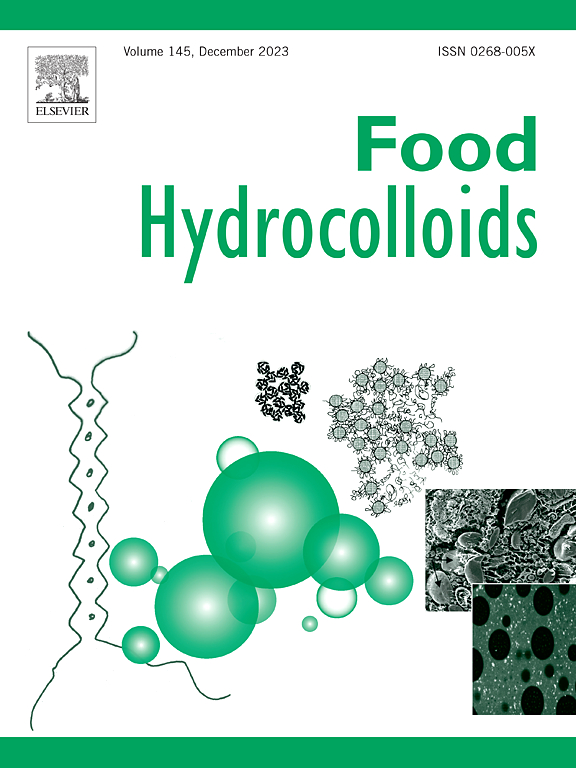Improving rheology and 3D printability of pea, fava and mung bean proteins with raw and fermented millet flour
IF 11
1区 农林科学
Q1 CHEMISTRY, APPLIED
引用次数: 0
Abstract
This study aims to enhance the rheological, 3D printing, textural, and nutritional properties of meat analogs by adding the raw and fermented finger millet (RFM and FFM) flour in pea, fava, and mung bean protein isolates (PPI, FPI, and MPI). The gel strength of all samples increased significantly by increasing the protein concentration. The tanδ values for all samples were below 1 (0.16–0.26) indicating elastic and solid-like behavior (G’ > G″). Frequency index increased for FPI (0.09–0.12), PPI (0.10–0.12), and MPI (from 0.10 to 0.13 for) based samples containing both RFM and FFM. The yield stress increased for FPR (111.34–128.47 Pa), FPF (122.73–132.1 Pa), PPR (93.37–166.39 Pa), PPF (126.31–180.4 Pa), MPR (46.17–162.93 Pa), MPF (86.12–189.28 Pa). The optimal formulation in terms of printing, smoothness, texture, and post-processing design retention for all protein-based inks was at finger millet flour to protein ratio of 1:4. However, the MPI-based samples exhibited superior characteristics of elasticity, shear thinning behavior, printing performance, frying stability, and texture. The structural analysis confirmed the higher interactions between FFM flour and proteins, enhancing rheological and textural properties. The protein digestibility values of the analogs ranged from 81.8 % to 91.2 %, with MPI samples exhibiting the highest protein digestibility. This research highlights the potential of utilizing lesser-known cereals to create edible and nutritious analogs through 3D printing.

求助全文
约1分钟内获得全文
求助全文
来源期刊

Food Hydrocolloids
工程技术-食品科技
CiteScore
19.90
自引率
14.00%
发文量
871
审稿时长
37 days
期刊介绍:
Food Hydrocolloids publishes original and innovative research focused on the characterization, functional properties, and applications of hydrocolloid materials used in food products. These hydrocolloids, defined as polysaccharides and proteins of commercial importance, are added to control aspects such as texture, stability, rheology, and sensory properties. The research's primary emphasis should be on the hydrocolloids themselves, with thorough descriptions of their source, nature, and physicochemical characteristics. Manuscripts are expected to clearly outline specific aims and objectives, include a fundamental discussion of research findings at the molecular level, and address the significance of the results. Studies on hydrocolloids in complex formulations should concentrate on their overall properties and mechanisms of action, while simple formulation development studies may not be considered for publication.
The main areas of interest are:
-Chemical and physicochemical characterisation
Thermal properties including glass transitions and conformational changes-
Rheological properties including viscosity, viscoelastic properties and gelation behaviour-
The influence on organoleptic properties-
Interfacial properties including stabilisation of dispersions, emulsions and foams-
Film forming properties with application to edible films and active packaging-
Encapsulation and controlled release of active compounds-
The influence on health including their role as dietary fibre-
Manipulation of hydrocolloid structure and functionality through chemical, biochemical and physical processes-
New hydrocolloids and hydrocolloid sources of commercial potential.
The Journal also publishes Review articles that provide an overview of the latest developments in topics of specific interest to researchers in this field of activity.
 求助内容:
求助内容: 应助结果提醒方式:
应助结果提醒方式:


